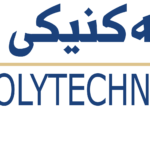- Asmaa Ameen Ghareeb
- [email protected]
- 0751 706 6033
- Final Full Thesis pdf.
-
Coronavirus disease-2019 (COVID-19) created a worldwide health problem in late 2019. It was caused by Sever Acute Respiratory Syndrome 2 (SARS-CoV-2), an enveloped RNA virus. The clinical presentation of the disease was found to be variable ranging from mild, moderate to severe. A number of comorbidities such as obesity, diabetes mellitus, organ disorders and age were reported to be associated with morbidity and mortality rates.
The aim of this study was to investigate the association of some laboratory parameters with SARS-CoV-2 infection in Erbil City/Iraq, and to study the circulating Variant of concerns (VOCs) among the infected population through Next Generation Sequencing (NGS) and analysis of the Spike (S) gene.
Throat and nasopharyngeal swabs and blood specimens were collected from suspected cases visited the Central laboratory or admitted to the three COVID-19 specific hospitals in Erbil City/Iraq. The infection was confirmed in 104 patients following RNA extraction and identification by real-time RT- PCR. Then, patients were clinically categorized into mild (n=40), moderate (n=32) and severe (n=32). Blood specimens were also collected from 34 healthy controls. All necessary clinical and demographic information were recorded. Hematological parameters such as lymphocyte count and % and platelet count and other biomarkers (CRP and D-dimer) were measured. Finally, RNA extracts from 15 mild and severe cases were sent to Ankara/Turkey for full S gene sequencing using NGS technique.
Age was significantly associated with COVID-19 (P value= 0.000), in which sever infections were common in extreme ages. No relation was found between ABO, Rh and gender with COVID-19 (P value= 0.41, 0.47 and 0.96
respectively). Death rate was high among sever patients (17(53.1%) as a consequence of multiple comorbidities. Oxygen saturation (SpO2) depressed more significantly in severe and moderate groups than in mild groups. Severe and moderate groups exhibit significantly higher CRP, D-dimer, and lymphocyte% (P<0.05) compared to control group. All the studied biomarkers were significantly higher in non-survivors than in survivors (P<0.001). There was a highly substantial positive correlation between D-dimer and CRP (r= 0.69, P value= 0.000), while a significant negative correlation was observed with other laboratory biomarkers.
The NGS and analysis of the S gene identified two SARS-CoV-2 variants; 13 Delta (B.1.617.2) and 2 Omicron (B.1.1.529). Variants were identified according to the WHO specification of each VOC. On the whole, different mutation classes have been observed including nonsynonymous that constituted the most abundant type of mutation, synonymous, non-frameshift deletions and non-frameshift insertion. L452R, T478K and P681R amino acid variations in spike protein were detected in all Delta isolates and were variant specific. On the other hand, Omicron variants appear with unusual number of mutations (35 mutations). D614G variation was conserved in both variants.
Gender, ABO, and Rh were not associated with COVID-19, but age and a number of comorbidities were significantly associated with disease severity. All studied laboratory biomarkers were associated with mortality. Delta variants showed variations in S gene mutation, whereas both Omicron variants were totally the same. No specific mutations were found to be associated with severity and mortality of COVID-19.
- Erbil Technical Health College
- Medical Laboratory Technology
- Medical Laboratory Technology


